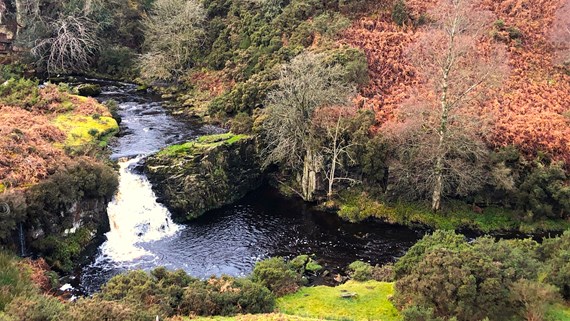Occupiers’ liability: the siren call of open water
Insight

Nearly two centuries and one pandemic after Lord Byron’s swim across the Hellespont, open water swimming (“dipping”, “wild swimming”, call it what you will) has taken off in our cooler waters. An estimated 2.1 million people now swim in open water every year and that is before counting stand-up paddle-boarders, kayakers and wading anglers. There is a profound draw to being near and in natural bodies of water, which is hard to resist.
The dangers of cold-shock, rip tides and underwater objects are well known and advised on by organisations like the Outdoor Swimming Society. They are also an intrinsic part of the attraction – straying outside our comfort zone. Responsible swimmers and other water users will take sensible measures to minimise risk, but accidents happen.
Two Acts
There are two Occupiers Liability Acts. The first from 1957 (1957 Act) provides that landowners owe a duty of care to their lawful visitors. The second from 1984 (1984 Act) provides that landowners also owe a (reduced) duty of care towards trespassers on their land.
The 1957 Act provides that landowners must take such care as is reasonable in all of the circumstances to ensure that visitors will be reasonably safe using the premises, for the purpose for which they are permitted or invited to use them. If you promote your lake as an open water swimming venue, host a triathlon or sell fishing, you are responsible for taking measures to make the lake reasonably safe for that purpose. Measures could include providing kayak safety cover and using non-slip matting to cover entry and exit points. Pontoons and other structures should be in safe repair. Carrying out a water quality test would also be wise.
Although the duty of care is lower, the position for trespassers is considerably more nuanced and will concern landowners, because the situation is harder to control. The 1984 Act states that a landowner owes a duty of care to a trespasser where
the landowner:
- is aware of a danger or has reasonable grounds to believe it exists;
- knows or has reasonable grounds to believe that the [trespasser] is in the vicinity of the danger, or may come into the vicinity of it; and
- the risk is one against which, in all the circumstances of the case, the landowner may reasonably be expected to offer the other some protection.
Obvious risks, willingly accepted
The 2003 case of Tomlinson v Congleton Borough Council gives some clarity on what this means in practice. Tomlinson was severely injured when he dived into shallow water, striking his head on the sandy bottom of a lake in a country park owned by the Council. The Council, aware of the dangers of the lake, had erected large signs reading “dangerous water: no swimming” and employed rangers telling people not to swim and handing out safety leaflets. Tomlinson alleged the Council breached their duty of care to him as a trespasser under the 1984 Act and claimed damages. On appeal, the House of Lords held that:
“it seems to me that Mr Tomlinson suffered his injury because he chose to indulge in an activity which had inherent dangers, not because the premises were in a dangerous state”
In other words, where there is an obvious risk (it is well known that diving can be dangerous) willingly accepted (Tomlinson ignored the warning signs and rangers) by the trespasser, it will generally be the case that the landowner is not liable.
Nature of premises versus state of premises
How far this duty extends in relation to open land is complicated and there are no hard and fast rules – although the duty is set out in statute, how it is applied is open to interpretation, as case law shows. The question is whether the risk is one against which the landowner, in all of the circumstances, might reasonably be expected to offer some protection. Each case will turn on its facts, but it seems the 1984 Act will not readily impose a duty to guard against risk arising from inherent and natural features of land, where those risks are obvious to members of the public.
A steep stretch of spate river with perilous rapids is naturally, intrinsically dangerous. The danger is in the very nature of the land and obviously there for all to see. It will often be difficult to argue that a landowner should be expected to offer any protection against trespassers choosing to swim in it. By contrast, a footbridge crossing that same stretch of river, which belongs to and should be maintained by the landowner, is a feature that might reasonably be expected to be kept in safe repair by the landowner against the risk that it collapses.
Although it applies only to access land, the Countryside and Rights of Way Act 2000 (CROW) is useful in indicating the direction of thinking. CROW gives the public greater access to the countryside, but amended the 1984 Act to ensure that this increased access did not result in increased liability for landowners. CROW provides that those on access land are treated as trespassers (not visitors) and further limits the landowner’s responsibility by distinguishing between man-made and natural hazards. Where a member of the public is on designated access land, no duty is owed by the landowner in respect of risks resulting from natural features of the landscape on that land, nor from any river, stream, ditch or pond, whether or not that is a natural feature.
(Ir)responsible access
In light of the current discussions about increasing “responsible access” to the countryside, the debate about how far landowners need to go to protect those on their land is likely to continue. Ultimately, each case will turn on its facts and the courts must decide where the balance lies between, on the one hand, the duty imposed on landowners and on the other hand, the fact that the trespasser must take responsibility for their own actions where they voluntarily participate in activities which are inherently risky, like open water swimming.
It is impossible to reduce the occupier’s risk of a trespasser claiming against them to zero, but it would be prudent to erect warning signs where you are aware of unusual or hidden dangers, or risks unique to that site, that the average visitor may not be aware of – sheer drops, unstable surfaces or submerged objects. Carry out periodic risk assessments and if necessary, fence off sites entirely. Man-made structures, such as footbridges, must be kept in safe repair. Adequate public liability insurance is an essential protection. At best, an incident will never occur, but if it does, you will have evidence that you considered it and took (in the words of the 1984 Act) reasonable steps to offer protection to trespassers. Whether the trespasser takes it, is up to them.
This article is part of the Rural Estates Newsletter 2024, click here to read.
This publication is a general summary of the law. It should not replace legal advice tailored to your specific circumstances.
© Farrer & Co LLP, Febaruary 2024







